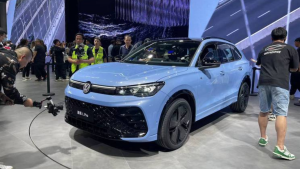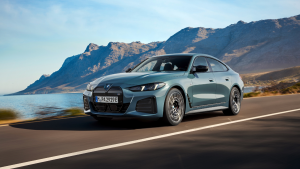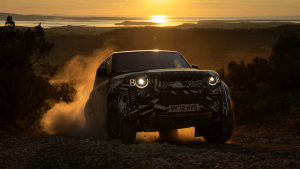Mercedes-Benz Rastatt factory in Germany, visited
I am not very good at picturing land sizes based on dimensions and need something of a reference to get the complete picture. Our guide clearly understood my plight soon after she had mentioned 147 hectares, which by the way, is the area that Mercedes' Rastatt factory is built on. She added, helpfully, that this number compares with having nearly 275 football fields put together. That probably explains how the plant produced about two lakh cars last year; a number that should rise this year considering that Mercedes has moved to three shifts a day to keep up with demand. While it's one of Mercedes' newer plants Rastatt is still 21 years old. When set up in 1992 the plant used to assemble the E-Class. Series production of the first generation A-Class began in 1996 while production of the first gen B-Class was introduced in 2005. However in 2011, Rastatt began the production of the first of the MFA (Mercedes Front wheel Architecture) platform cars, the new B-Class. The new A-Class began to roll off the line in mid-2012 and has been seeing growing demand since. The MFA will spawn five different cars. Three of them â" the A, B and upcoming GLA will be produced at Rastatt. The CLA and the Shooting Brake based on the CLA meanwhile will be assembled at Mercedes' Kecskemt plant in Hungary.
Rastatt, I thought was just a car manufacturing facility, but Mercedes, must think it to be a lot more given how secretive it was about its plant. All our devices capable of recording footage were taken away, we were then put in a bus and driven to a secured location so to speak, which happened to be a large garage. And only after the garage has been sealed from both ends, were we allowed to get off the bus. Only opening remaining was into the factory. Once inside, there were no guns, no rocket launchers and WMDs, just 6,600 employees going about their work producing cars with some help from highly modern robots. Just makes you wonder what all the secrecy was about. Anyways, since this was my first visit to a car factory, just the sight of robotic arms moving around with such speed and precision had me in awe. It was amazing to see how well these robots had been programmed to position the various components into place just at the right time so that the workers could bolt them on without even having to look twice if the right stuff had arrived and if it was positioned correctly. And the workers themselves were super skilled. Things like wiring harnesses weighing over 30kg were effortlessly put together by them in hardly any time.
The whole place was a major flurry of activity and there was something interesting to see in every direction. What really made an impression was that every worker has just a few minutes to finish his particular task on the car because the conveyor was constantly moving. Of course, the speed is calculated so that it is comfortable for the workers, but unlike you and me these guys can't take a break for coffee whenever they feel like; they're always on a schedule. We were watching the A-Class being put together. Given that the car offers plenty of individual customisation options from seat trims to dashboard materials to the wheels and more, it requires some planning to ensure the right coloured and textured seat arrives for the car in the right colour and with the right equipment levels. In an idyllic display of clinical German efficiency every single personalised component arrives via different conveyors at exactly the right time in exactly the right order for each car. Every process is optimised and perfected with no room for error. It's a real sight to see such clockwork efficiency.
The treat of the day though, was watching the two robotic arms working together to attach the windscreen to the body shell. One of them scanned the exact dimensions of the body shell arriving on the conveyor while the other picked up a windscreen from a stack using suction cups. It then swivelled over to another machine to get a clean line of glue run across the edges of the windscreen. The arm then swung back over to the car and hovered just above the body shell for a few seconds to make sure the positioning was perfect before firmly pressing the windscreen into the body shell. A few seconds later the process was complete and the next body shell moved into place. It was quite cool to watch and we finally had to be shepherded away as we just wanted to watch it again and again.
Another interesting bit about the plant was the use of Emu feathers in the paint shop. Apparently they are the most efficient at removing dust particles and every car gets a thorough buffing with the feathers before they go in for the final stages of painting. As advanced as the tech may get, nature almost always still has the best answers. Our entire tour was over in about 45 minutes and of course we were only allowed to see certain stages of the manufacturing process. But it was an eye opener and testimony of how obsessed Mercedes-Benz is with quality, right from the manufacturing stage. It also explained why even its smallest and most affordable cars don't feel cheap and you get real three point star quality for your money.
Related Stories
Top Stories
Latest Videos
Most Popular
- Budget Sportbike Showdown: Kawasaki Ninja 500 vs Aprilia RS 457 vs Yamaha YZF-R3
- 2014 Triumph Daytona 675 vs 2024 Kawasaki ZX6R - A Decade of Evolution in Supersport Motorcycles
- Mumbai-Pune Expressway speed restrictions updated
- Nissan Magnite EZ-Shift review - is the AMT any good?
- Nitin Gadkari states that tax on Hybrids should be reduced to 12 percent in the coming future











